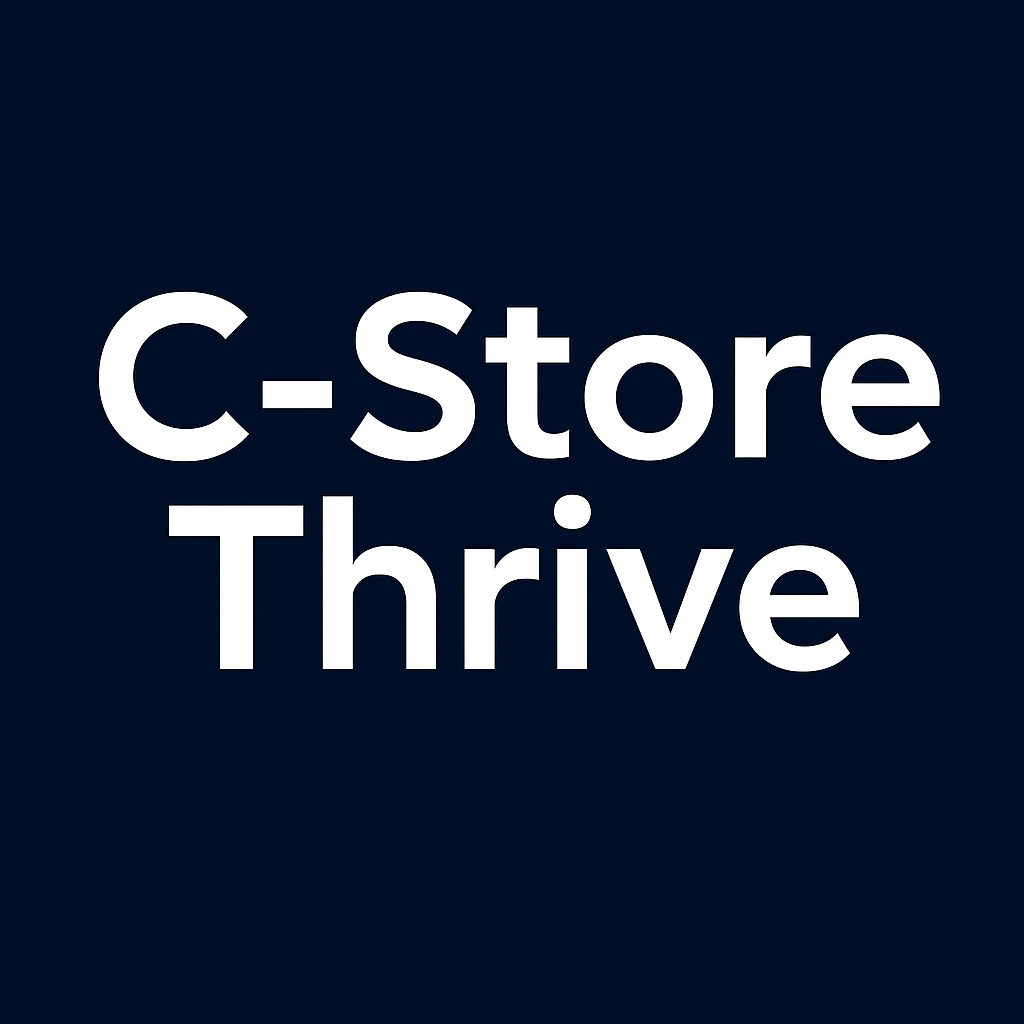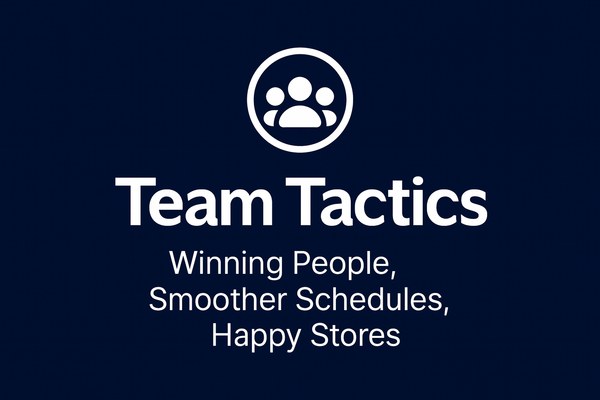Setting Up a Chart of Accounts for Your Convenience Store Operation
The foundation of C-store financial success starts with proper account organization. Independent stores face complex accounting with dual revenue streams, high transaction volumes, and diverse product categories requiring detailed asset, liability, revenue and expense categorization.

The foundation of your C-store's financial success starts with proper account organization. Here's how to build a chart of accounts that provides clear insights into your business performance while meeting the unique demands of convenience store operations.
Independent convenience store owners face a complex financial landscape that demands precision and clarity. With over 150,000 C-stores operating across the United States and approximately 60% being independently owned, proper financial management has never been more critical. At the heart of effective financial management lies a well-structured chart of accounts—your roadmap to understanding where money comes from and where it goes.
Why C-Store Accounting Is Uniquely Complex
Unlike traditional retail businesses, convenience stores operate in a high-volume, low-margin environment with unique accounting challenges. You're managing dual revenue streams—fuel sales typically operating at 3-5% margins while retail products can achieve margins exceeding 20%. This complexity is compounded by:
- Multiple payment methods: Cash, credit cards, EBT, mobile payments, and loyalty program transactions
- High transaction volume: Averaging 1,100 customers per day per location
- Perishable inventory management: With strict expiration dates and shrinkage concerns
- Diverse product categories: From cigarettes and beverages to prepared foods and lottery tickets
Without proper account categorization, these complexities can create financial blind spots that impact your ability to make informed business decisions.
The Foundation: Core Account Categories
Assets: Your Store's Financial Resources
Current Assets form the backbone of daily operations:
- 1010 Cash in Bank - Operating Account: Your primary checking account for daily transactions
- 1020 Cash in Bank - Payroll Account: Separate account dedicated to payroll processing
- 1030 Cash Register Drawer: Physical cash on hand across all registers
- 1040 Petty Cash: Small amounts for minor expenses and change-making
- 1100 Accounts Receivable: Outstanding payments from credit card processors, lottery commissions, and commercial customers
- 1200 Inventory - Retail: Your stock of convenience items, beverages, and snacks
- 1201 Inventory - Tobacco Products: Separate tracking for high-value, regulated tobacco inventory
- 1202 Inventory - Prepared Food: Fresh and prepared food items requiring different handling
- 1300 Prepaid Expenses: Insurance premiums, rent deposits, and other advance payments
Fixed Assets represent long-term investments:
- 1710 Furniture & Equipment: Shelving, coolers, freezers, and POS systems
- 1720 Leasehold Improvements: Store renovations and improvements to leased spaces
- 1810 Accumulated Depreciation - Equipment: Contra-asset account tracking equipment depreciation
Liabilities: What You Owe
Current Liabilities require immediate attention:
- 2100 Accounts Payable: Amounts owed to suppliers and vendors
- 2200 Sales Tax Payable: State sales tax collected from customers
- 2250 City/Local Tax Payable: Municipal taxes collected
- 2300-2500 Payroll Tax Liabilities: Federal withholding, FICA, unemployment taxes
Long-term Liabilities:
- 2600 Equipment Loans: Financing for coolers, POS systems, and other equipment
- 2700 SBA Loans: Small Business Administration loans for business acquisition or expansion
Equity: Your Ownership Stake
- 3000 Owner's Capital: Your initial and ongoing investment in the business
- 3300 Retained Earnings: Accumulated profits kept in the business for growth
Revenue Categories: Understanding Your Income Streams
Primary Revenue Accounts should reflect your business model:
- 4000 Fuel Sales: If your store includes gas pumps
- 4100 Retail Sales - General Merchandise: Non-food convenience items
- 4200 Food Service Sales: Prepared foods, hot items, and fountain beverages
- 4300 Beverage Sales: Packaged beverages, a key profit driver
- 4400 Tobacco Sales: Cigarettes and tobacco products
- 4500 Lottery Sales: Lottery ticket sales and commissions
- 4600 ATM Commission: Revenue from on-site ATM services
- 4700 Other Income: Miscellaneous revenue sources
Contra-Revenue Accounts track deductions:
- 4900 Sales Returns & Allowances: Customer returns and damaged goods
- 4950 Credit Card Processing Fees: Fees charged by payment processors
This detailed revenue breakdown is crucial because foodservice has emerged as a major growth opportunity, with prepared meals showing a 16.3% increase in 2024 and contributing over 37% of store profits despite representing only 27% of sales.
Cost of Goods Sold: Tracking Your Product Costs
Accurate COGS tracking is fundamental to profitability analysis:
- 5000 COGS - General Merchandise: Cost of non-food retail items
- 5100 COGS - Food Service: Cost of prepared food ingredients and supplies
- 5200 COGS - Beverages: Cost of packaged beverages
- 5300 COGS - Tobacco: Cost of tobacco products
- 5400 COGS - Fuel: Cost of gasoline and diesel fuel
- 5500 Inventory Shrinkage: Losses due to theft, spoilage, and administrative errors
Industry benchmarks show that shrinkage impacts stores by an average of 1.85% of annual sales, making accurate tracking essential for profitability.
Operating Expenses: Managing Your Overhead
Labor Expenses
Labor represents approximately 14% of total sales and continues rising:
- 6000 Wages - Management: Salaries for store management
- 6100 Wages - Staff: Hourly employee wages
- 6200 Payroll Taxes: Employer portion of payroll taxes
- 6300 Employee Benefits: Health insurance, retirement contributions
Operational Expenses
- 6400 Rent/Lease: Monthly facility costs
- 6500 Utilities: Electricity, water, gas—typically under 3% of sales
- 6600 Insurance: General liability, property, and workers' compensation
- 6700 Repairs & Maintenance: Equipment servicing and facility upkeep
- 6800 Security: Camera systems, alarm monitoring, and security services
- 6900 Cash Management: Bank fees, armored car services, and deposit costs
Technology and Communications
- 7000 POS System: Point-of-sale software licensing and support
- 7100 Internet & Phone: Essential connectivity costs
- 7200 Credit Card Processing: Transaction fees beyond basic processing
Marketing and Professional Services
- 7300 Advertising: Local marketing and promotional expenses
- 7400 Professional Services: Accounting, legal, and consulting fees
- 7500 Licenses & Permits: Business licenses, lottery licenses, tobacco permits
Implementing Your Chart of Accounts
Numbering System Best Practices
Use a logical four-digit numbering system that allows for expansion:
- 1000-1999: Assets
- 2000-2999: Liabilities
- 3000-3999: Equity
- 4000-4999: Revenue
- 5000-5999: Cost of Goods Sold
- 6000-7999: Operating Expenses
Integration with Your POS System
Modern POS systems can automatically categorize sales by department and integrate directly with accounting software like QuickBooks. This automation reduces manual entry errors and provides real-time financial reporting.
Monthly Reconciliation Process
Establish a consistent monthly routine:
- Reconcile all bank accounts and credit card statements
- Review inventory levels and adjust for shrinkage
- Analyze category performance against benchmarks
- Calculate key performance indicators like gross margins by department
Key Performance Indicators to Monitor
Your chart of accounts should facilitate tracking these critical metrics:
- Gross margin by department: Target 25-35% overall
- Inventory turnover rates: Measure how quickly products sell
- Sales per square foot: Efficiency of your retail space
- Shrink rate: Keep below 2% of sales
- Labor as percentage of sales: Target 8-12%
Technology Considerations for Modern C-Stores
As the industry embraces AI integration and enhanced data analytics, your chart of accounts must support advanced reporting needs. Consider accounts that track:
- Digital payment processing fees for mobile wallets and contactless payments
- Loyalty program costs and redemption expenses
- EV charging revenue for stores investing in electric vehicle infrastructure
Common Pitfalls to Avoid
Over-complicating categories: Too many accounts can make reporting cumbersome. Start with essential categories and expand as needed.
Mixing fuel and retail finances: Keep these revenue streams separate for accurate margin analysis.
Ignoring contra-accounts: Properly track returns, allowances, and processing fees to understand true revenue.
Inconsistent naming conventions: Use clear, descriptive names that your team understands.
Getting Professional Help
Given the complexity of C-store operations, consider working with an accounting firm that specializes in convenience stores. These professionals understand industry-specific challenges like dual revenue streams, lottery accounting, and tobacco tax compliance.
Conclusion
A well-structured chart of accounts serves as the financial foundation for your convenience store operation. It provides the clarity needed to identify profitable product categories, control costs, and make informed business decisions in an increasingly competitive market.
Remember that your chart of accounts is a living document that should evolve with your business. As you expand services, add new product categories, or implement new technologies, regularly review and adjust your account structure to maintain its effectiveness.
With 58% of convenience store operators feeling optimistic about 2025, now is the perfect time to establish the financial systems that will support your store's growth and profitability for years to come.
Ready to implement a chart of accounts for your convenience store? Consider starting with accounting software designed for retail operations, and don't hesitate to consult with industry-specific accounting professionals who understand the unique challenges of C-store operations.





